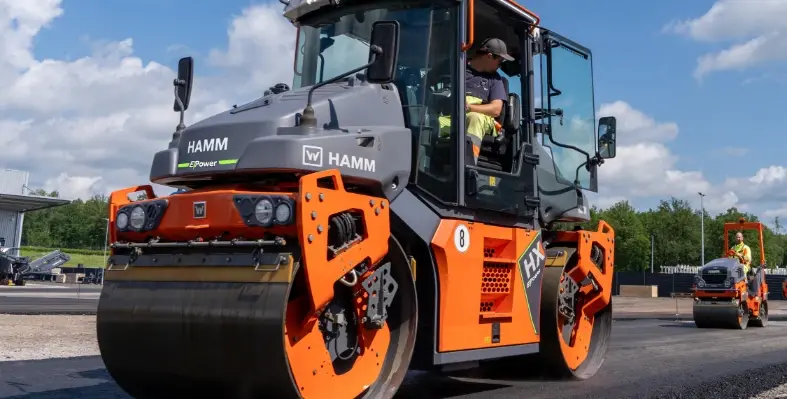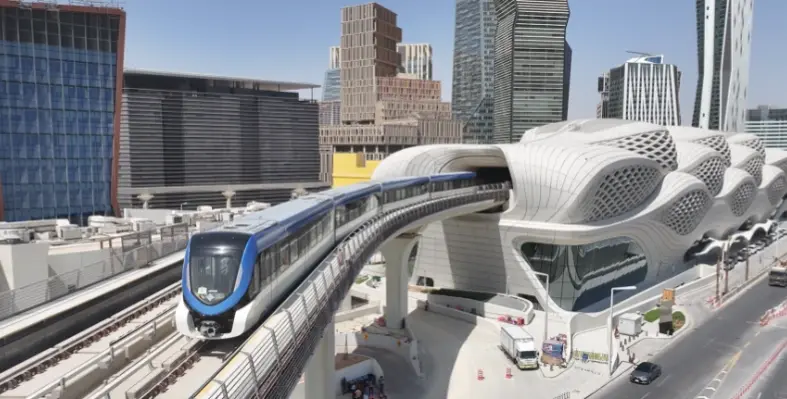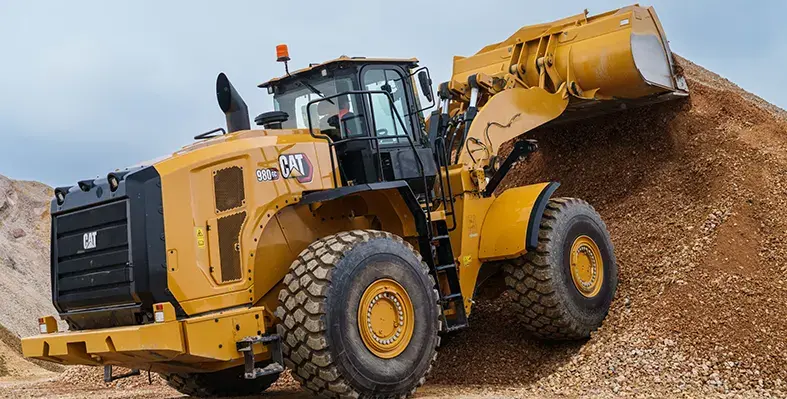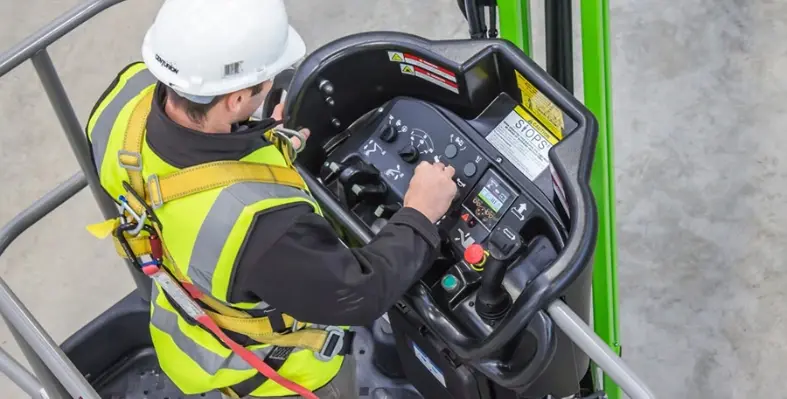
The HX 70e uses a 400-volt lithium-ion battery from Kreisel, offering a capacity of 63 kWh. (Image source: HAMM)
At Bauma 2025, compaction expert Hamm spotlighted the latest addition to its range of pivot-steered tandem rollers: the fully electric HX 70e VV-S, equipped with two vibration drums.
Designed to support the construction industry’s shift towards lower emissions, the machine is aimed at making roadbuilding more sustainable.
A second version, the HX 70e VO-S, was also on display.
This variant features an oscillation drum instead of a second vibration drum. As part of an ongoing technology rollout, both models are initially being trialled on urban construction sites across Europe.
Electrification without compromise
The HX 70e uses a 400-volt lithium-ion battery from Kreisel, offering a capacity of 63 kWh.
This proven component enables efficient and powerful operation, while the electric drive system ensures low noise and reduced emissions.
Charging is handled via a standard Type 2 connector, with additional options such as Type 1, J1772, and CCS to follow.
With fast charging, the battery can go from 20% to 80% in under an hour, ideal for high-paced jobsites.
Despite its electric powertrain, the HX 70e matches its diesel-powered counterparts in performance.
Compaction power remains the same, and peak output is even higher.
The oscillation version, in particular, benefits from an ultra-quiet profile, combining the low noise of oscillation with that of an electric drive, making it ideal for work near hospitals, heritage buildings, or in vibration-sensitive zones.
Familiar operation, lower costs
Operators will find the electric models nearly identical to diesel versions in terms of control and handling. The main difference lies in the updated display interface, which features new symbols to guide the user intuitively.
Maintenance requirements are also reduced thanks to the simplified design of the high-voltage electrical system, which eliminates many of the service needs typical of diesel engines.
This translates into lower operating costs and improved uptime.
Customers can continue to rely on the Wirtgen Group’s established service network, and the new machines are compatible with the John Deere Operations Center for remote monitoring and fleet management, just like their diesel equivalents.
Also read: Wirtgen Group launches zero-emission construction system








